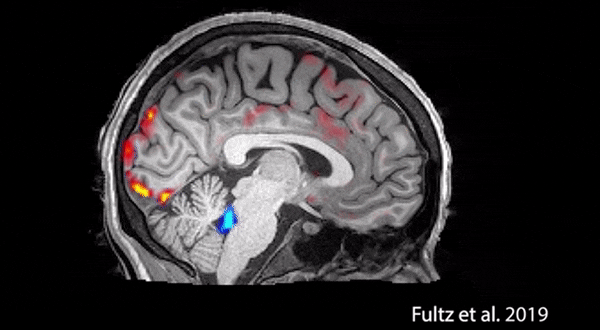MY 100-Day English -21
7 Ways to Learn More Effectively
What neuroscience tells us about how to maximize our learning potential.
1. Break up your learning into small chunks
Studies have shown that rather than studying for long stretches at a time (一次学习很长时间), giving ourselves small breaks in between can greatly enhance focus. The problem here is not that we have brief attention spans — it is that constantly paying attention to the same stimulus can cause our brains to regard it as potentially unimportant. An optical illusion called “Troxler Fading” is a good analogy (类比,比喻) for this — constantly fixating (注视) on a particular point can cause unchanging points in our peripheral vision to “fade away.”

The scientist who performed this study wondered if a similar principle might apply to thoughts as well — constant attention to a particular thought or group of thoughts might just cause it to disappear from our awareness. This is where taking little breaks in between learning can be useful.
One of the most practical and oft-quoted applications of this idea is the Pomodoro technique (番茄工作法). This technique involves working for a stretch of 25 minutes, followed by a short 5-minute break. This break is important, as we have discussed, to take our minds off the problem and activate different regions of the brain from those we were using while we were focused on the task. This not only provides an opportunity to get more creative, but it also keeps our temptation (引诱,诱惑物) to get distracted in check (受控制的,受检查的).
2. Sleep is essential for successful learning
Barbara Oakley, in her excellent Talk at Google on how the brain learns, coins the term (抛出术语) “focused mode” for the parts of the brain that are activated when challenged with a familiar problem. In “focused mode,” she says, many of the neural connections are already made. But when we start to learn something completely new, another mode of the brain, the “default mode,” comes into play. The default mode network comprises (包含) a range of brain regions that are active when a person is at rest. These are probably the regions at work when we say “I don’t know how that idea came to me while I was washing the dishes. I wasn’t even thinking about the problem!” Given that it comprises diffuse brain regions, the default mode network can be useful at associating seemingly unrelated concepts or ideas.
This is one of the reasons why sleep is so important to learning. Studies have shown that sleep is essential for a few reasons — for one, the process of consolidating short-term memories to long-term ones happens in part during sleep. It has also been demonstrated in mice that sleep drives clearance of by-products of neural activity from the brain, leading to a possible restorative (恢复健康的) effect.
当我们睡着时,大脑的“清理”过程:
Coupled electrophysiological, hemodynamic, and cerebrospinal fluid oscillations in human sleep

图片来自science杂志
短语词组:
a stretch of 25 minutes
comes into play :开始发挥作用
See you tomorrow




